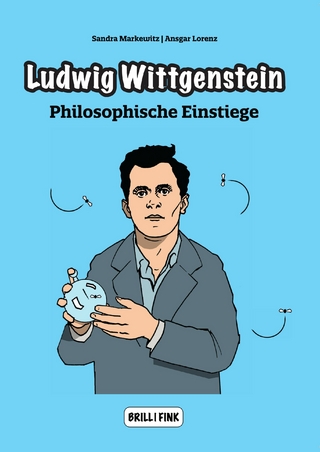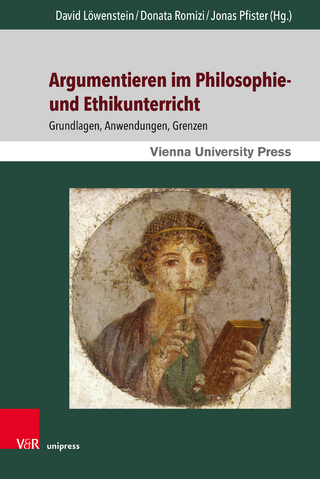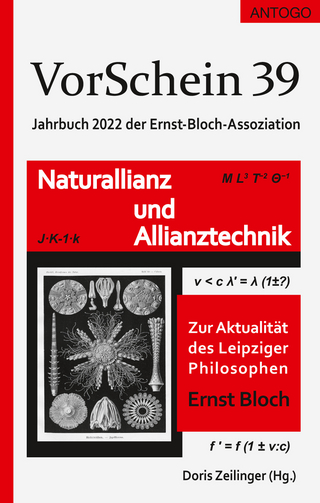
Introduction to Logic
Routledge (Verlag)
978-0-13-242587-2 (ISBN)
- Titel erscheint in neuer Auflage
- Artikel merken
For undergraduate-level courses in Introduction to Logic. The most complete, authoritative treatment of introductory logic — both deductive and inductive, classical and modern — this text prepares students to understand, recognize, and apply classical syllogistic logic and the more powerful techniques of modern symbolic logic. All concepts and techniques are carefully and thoroughly explained and are brought to life through a wealth of real-life examples of lively arguments and explanations. These examples are drawn from political speeches, classics of philosophy (ancient and modern), scientific articles, writings on economics, literature, religious texts, and many recent writings on contemporary moral and social controversies familiar to students — all demonstrating the application of logical principles by serious writers and thinkers trying to solve real problems in a wide range of fields.
(NOTE: Each chapter concludes with a Summary.)I. REASONING.
1. Basic Logical Concepts.
What Logic Is. Propositions and Sentences. Arguments, Premisses, and Conclusions. More Complex Arguments. Recognizing Arguments. Deduction and Induction. Validity and Truth. Arguments and Explanations.
2. Analyzing and Diagramming Arguments.
Argument Diagrams. Analyzing Passages Containing More than One Argument. Analyzing Complex Argumentative Passages.
3. Solving Problems Using Logic.
Problem Solving. Problems in Reasoning. Retrograde Reasoning.
II. LANGUAGE.
4. The Uses of Language.
Three Basic Functions of Language. Discourse Serving Multiple Functions. The Forms of Discourse. Emotive Words. Kinds of Agreement and Disagreement. Emotively Neutral Language.
5. Definition.
Disputes, Verbal Disputes, and Definitions. Kinds of Definition and the Resolution of Disputes. Denotation (Extension) and Connotation (Intension). Extension and Denotative Definitions. Intension and Connotative Definitions. Rules for Definition by Genus and Difference.
6. Fallacies.
What Is a Fallacy? Fallacies of Relevance. Fallacies of Presumption. Fallacies of Ambiguity.
III. DEDUCTION.
7. Categorical Propositions.
The Theory of Deduction. Categorical Propositions and Classes. Quality, Quantity, and Distribution. The Traditional Square of Opposition. Further Immediate Inferences. Existential Import. Symbolism and Diagrams for Categorical Propositions.
8. Categorical Syllogisms.
Standard-Form Categorical Syllogisms. The Formal Nature of Syllogistic Argument. Venn Diagram Technique for Testing Syllogisms. Syllogistic Rules and Syllogistic Fallacies. Exposition of the 15 Valid Forms of the Categorical Syllogism.
9. Arguments in Ordinary Language.
Syllogistic Arguments in Ordinary Language. Reducing the Number of Terms in a Syllogistic Argument. Translating Categorical Propositions into Standard Form. Uniform Translation. Enthymemes. Sorites. Disjunctive and Hypothetical Syllogisms. The Dilemma.
10. Symbolic Logic.
The Symbolic Language of Modern Logic. The Symbols for Conjunction, Negation, and Disjunction. Conditional Statements and Material Implication. Argument Forms and Arguments. Statement Forms, Material Equivalence, and Logical Equivalence. The Paradoxes of Material Implication. The Three “Laws of Thought.”
11. The Method of Deduction.
Formal Proof of Validity. The Rule of Replacement. Proof of Invalidity. Inconsistency.
12. Quantification Theory.
Singular Propositions. Quantification. Traditional Subject-Predicate Propositions. Proving Validity. Proving Invalidity. Asyllogistic Inference.
IV. INDUCTION.
13. Analogy and Probable Inference.
Argument by Analogy. Appraising Analogical Arguments. Refutation by Logical Analogy.
14. Causal Connections: Mill's Methods of Experimental Inquiry.
Cause and Effect. Mill's Methods. Critique of Mill's Methods.
15. Science and Hypothesis.
The Values of Science. Explanations: Scientific and Unscientific. Evaluating Scientific Explanation. Seven Stages of Scientific Investigation. Scientists in Action: The Pattern of Scientific Investigation. Crucial Experiments and Ad Hoc Hypotheses. Classification as Hypothesis.
16. Probability.
Alternative Conceptions of Probability. The Probability Calculus. Probability of Joint Occurrences. Probability of Alternative Occurrences. Expected Value.
Solutions to Selected Exercises.
Special Symbols.
Glossary and Index of Logical Terms.
Index of Names and Titles.
| Erscheint lt. Verlag | 28.8.1997 |
|---|---|
| Verlagsort | New York |
| Sprache | englisch |
| Maße | 244 x 175 mm |
| Gewicht | 1137 g |
| Themenwelt | Geisteswissenschaften ► Philosophie ► Logik |
| ISBN-10 | 0-13-242587-4 / 0132425874 |
| ISBN-13 | 978-0-13-242587-2 / 9780132425872 |
| Zustand | Neuware |
| Haben Sie eine Frage zum Produkt? |
aus dem Bereich


